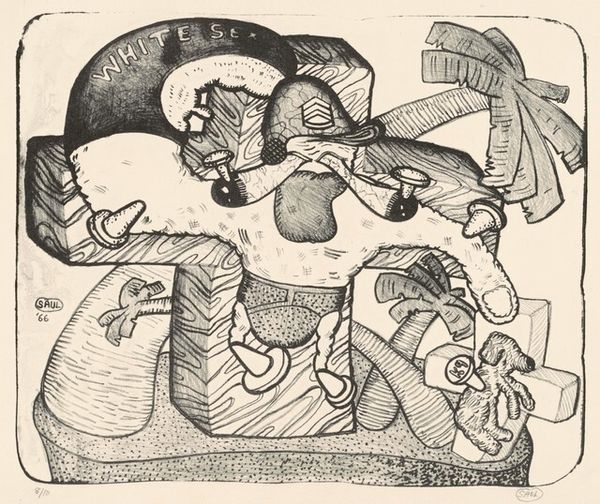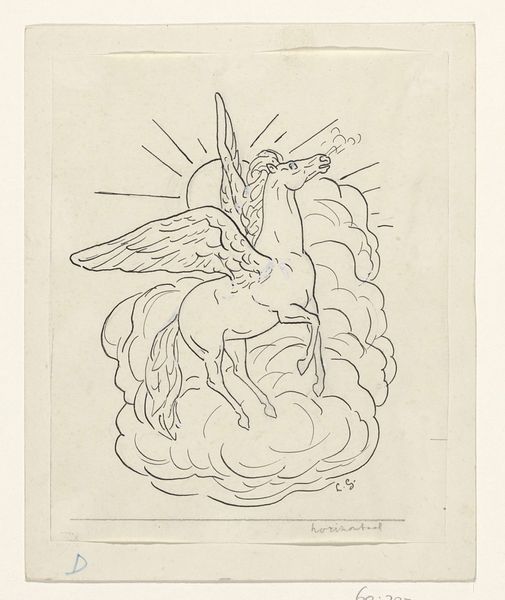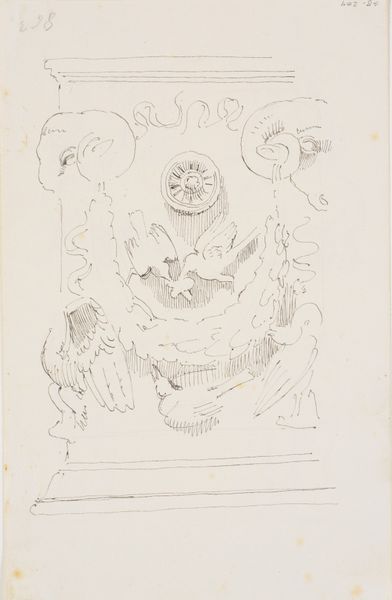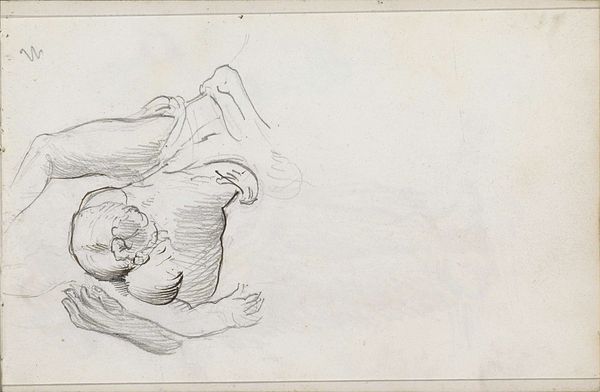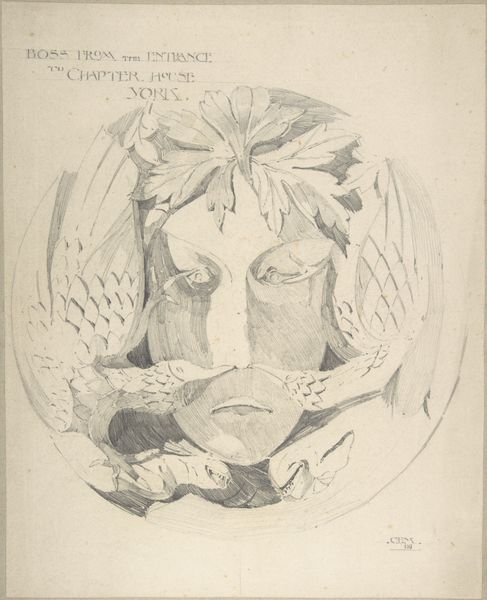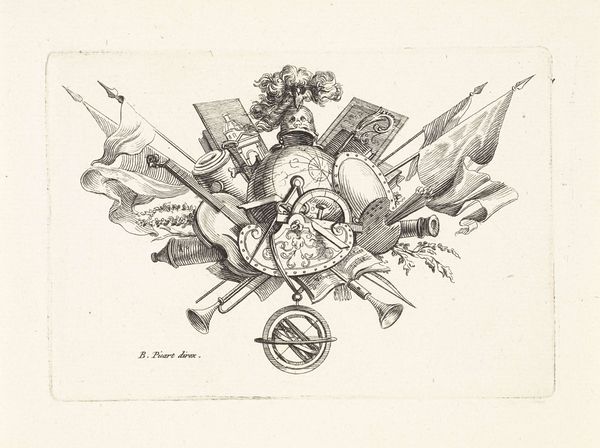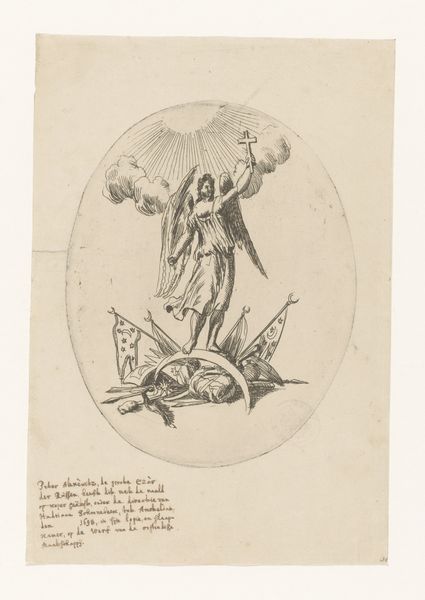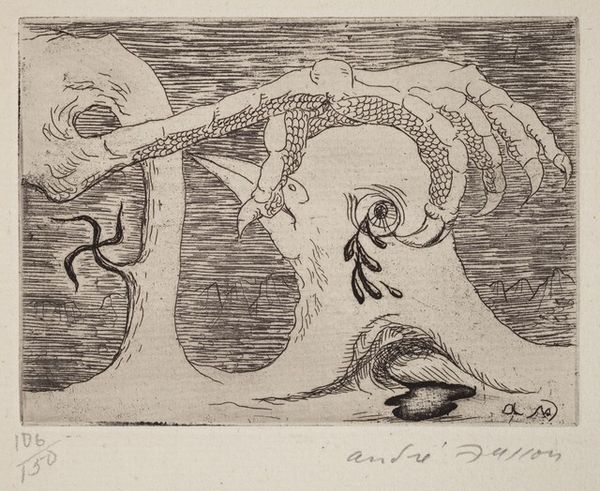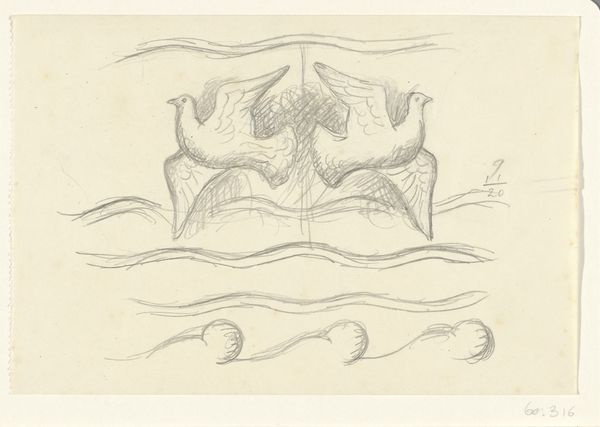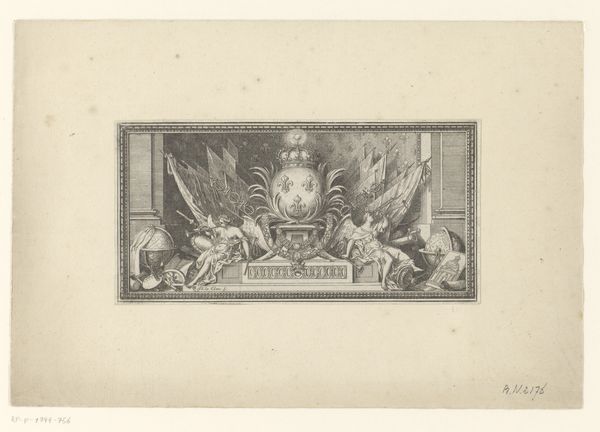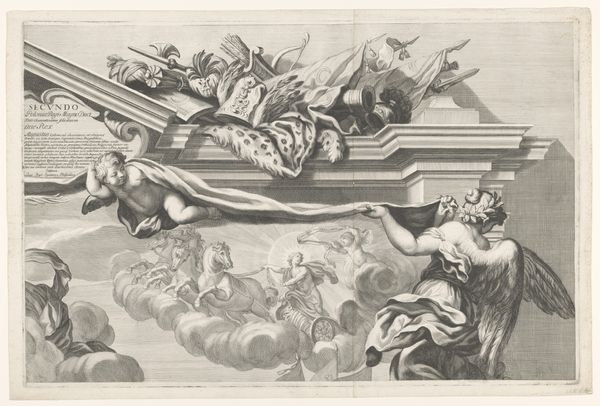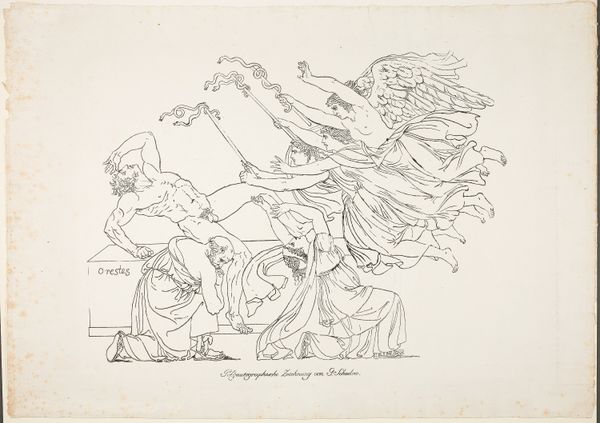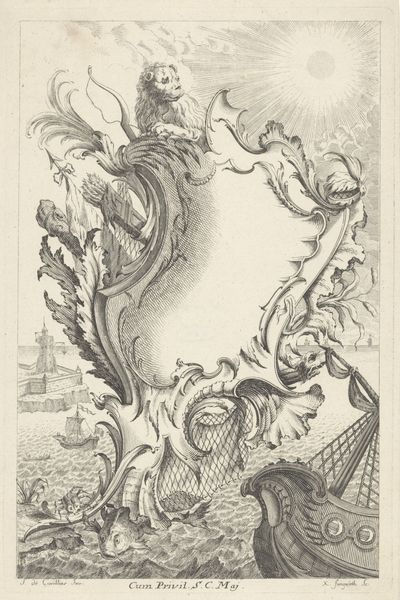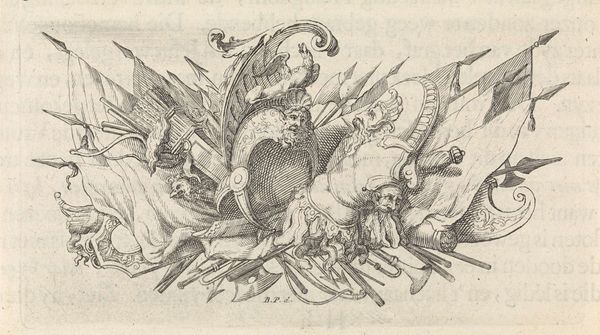
Dimensions: image: 134 x 191 mm
Copyright: CC-BY-NC-ND 4.0 DEED, Photo: Tate
Editor: This is John Flaxman's "Dis, or Lucifer," a pen and ink drawing. It's quite stark, almost skeletal in its depiction of hell. What historical context informed Flaxman’s artistic choices, particularly regarding the visual representation of Lucifer? Curator: Flaxman, working in the late 18th and early 19th centuries, was deeply influenced by Neoclassicism, and the rise of public exhibitions. His linear style reflects a reaction against the perceived excesses of the Baroque. The skeletal Lucifer, devoid of seductive glamour, presents a politicized statement against tyranny, connecting religious themes to contemporary socio-political concerns. Editor: So, the starkness itself is a commentary? Curator: Precisely. The absence of ornamentation implicates the institutions of power. It encourages viewers to question the visual rhetoric and societal values promoted in more elaborate artistic displays. Editor: That’s a fascinating connection between style and social critique. I’ll definitely remember that. Curator: Indeed, examining the visual choices alongside their historical reception reveals the intricate dance between art and public opinion.
